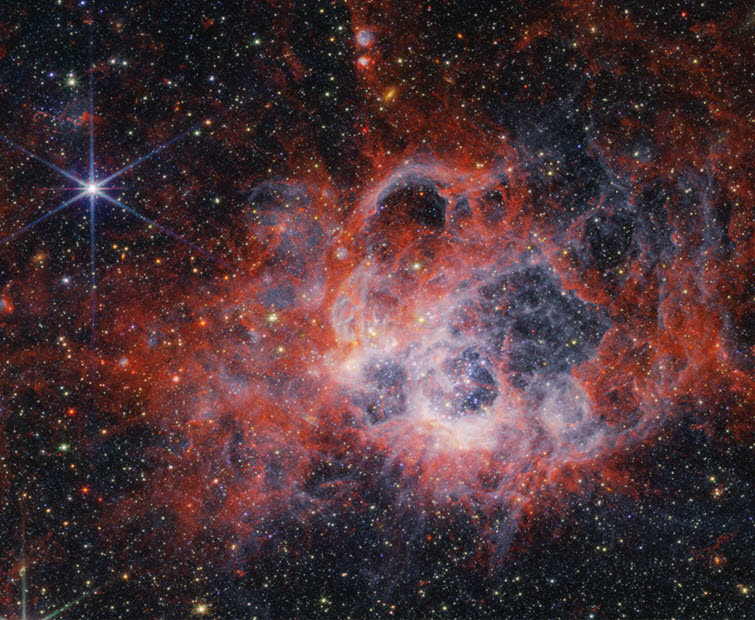NASA's JWST Captures New Views of NGC 604
Posted on March 12, 2024

NASA's James Webb Space Telescope (JWST) has captured two new views of NGC 604, a star-forming region of the Triangulum galaxy. The region is home to over 200 massive stars - B-types and O-types. Some of the biggest of the stars (O-types) have masses over 100 times the mass of our Sun.
Two images were obtained by Webb's NIRCam (Near-Infrared Camera) and MIRI (Mid-Infrared Instrument). They reveal the complex patterns of star births in a galaxy over 2.7 million light-years from Earth.
The above image was obtained by NIRCam.
The bright orange-colored streaks in the Webb near-infrared image signify the presence of carbon-based molecules known as polycyclic aromatic hydrocarbons, or PAHs. This material plays an important role in the interstellar medium and the formation of stars and planets, but its origin is a mystery. As you travel farther from the immediate clearings of dust, the deeper red signifies molecular hydrogen. This cooler gas is a prime environment for star formation.
NASA says NGC 604 is estimated to be about 3.5 million years old. Its eerie and spectacular glowing gases extend for about 1,300 light-years.
Image: NASA, ESA, CSA, STScI
